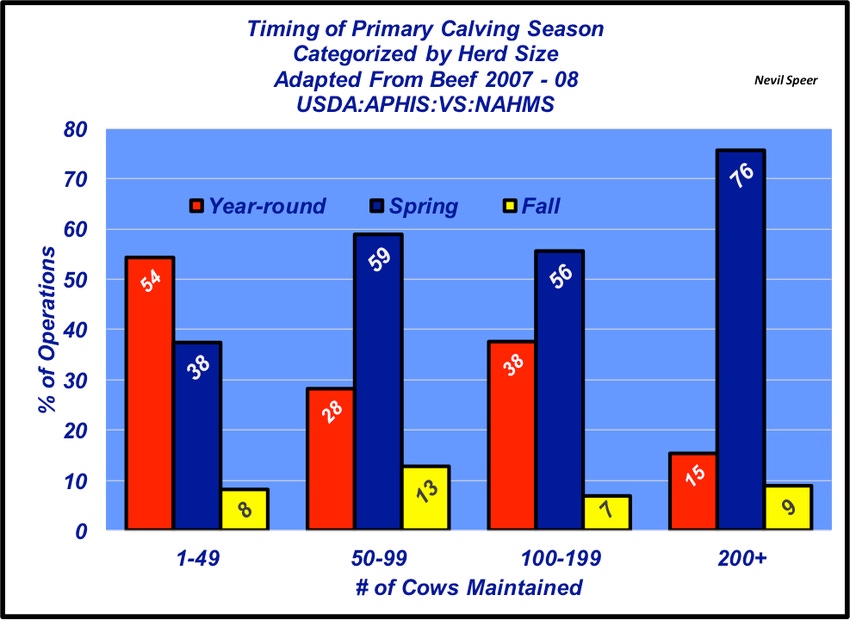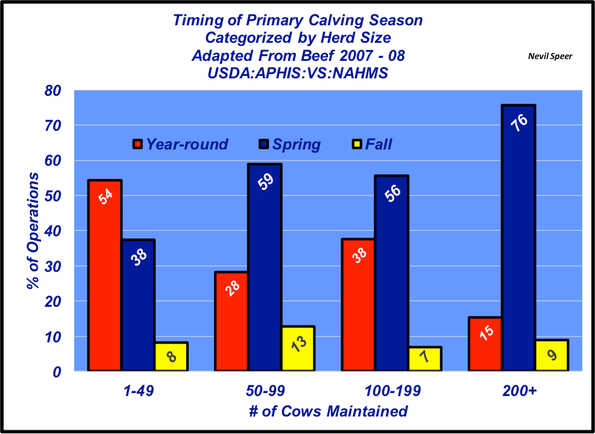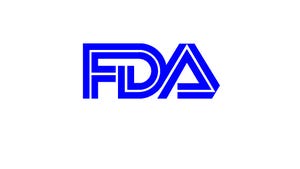What’s the most popular time for calving season?
To make a dent in the spread of BVD, it’s important to have a defined calving season. How many cattle producers have one though?
April 18, 2016

Last week’s Industry At A Glance focused on producer awareness of BVD. That emphasis was a direct result of a recent one-day industry symposium on BVD in Kansas City hosted by the National Institute for Animal Agriculture, in partnership with the National Cattlemen’s Beef Association. The purpose of the symposium was to address producer education, prevention strategies and discuss industry-wide solutions going forward.
Producer awareness remains relatively limited around BVD. Less than 60% of producers with 200 cows or more indicate they are fairly knowledgeable about BVD. Meanwhile, only about one in four producers with less than 50 cows categorized themselves as being knowledgeable about BVD in the NAHMS Beef 2007-08 survey. As such, there’s a continuing need to improve education on the subject.
Simultaneously, inherent management practices also make BVD somewhat difficult to stamp out in the U.S. beef industry. Most notably, those practices include the need for more vigilant vaccination programs, which are directly related to knowledge – or lack thereof – about BVD.
That leads directly to the next aspect—calving season management. The absence of a defined calving season renders vaccination programs largely ineffective. Proper timing of vaccination is essential for maximum effectiveness – but that’s impossible when animals are at various stages of production. And therein enters the conundrum of persistently infected (PI) calves.

PI calves are the direct result of a BVD infection early in gestation and serve as an important source of disease risk within the herd. Cows that aren’t properly vaccinated (for whatever reason) represent increased risk of producing a PI calf – especially when running in a herd with a PI calf that is already present. That type of adverse cycle is confounded in those herds without a defined calving season.
Accordingly, this week’s illustration highlights calving season management in the NAHMS Beef 2007-08 survey. What’s your perception of calving season and its influence on BVD transmission? Have you made efforts to consolidate your calving season in recent years? Was that due to disease prevention strategies or for some other reason? Leave your thoughts in the comments section below.
Nevil Speer is based in Bowling Green, Ky., and serves as vice president of U.S. operations for AgriClear, Inc. – a wholly-owned subsidiary of TMX Group Limited. The views and opinions of the author expressed herein do not necessarily state or reflect those of the TMX Group Limited and Natural Gas Exchange Inc.
You might also like:
Ranching operations personify environmental stewardship
55 photos celebrating spring on the ranch
7 things to put on your breeding season prep checklist
Be aware of rabies' warning signs in cattle
About the Author(s)
You May Also Like





